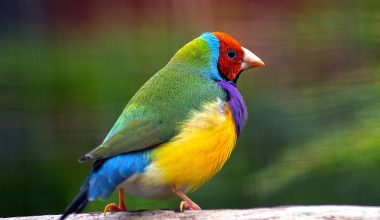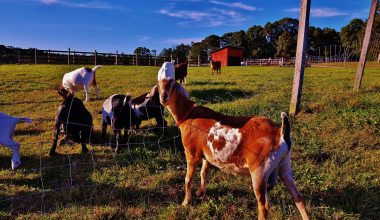Mother nature surprised us with so many different animals and their importance in maintaining the ecological balance of the planet. There are numerous simple-looking animals, howvever, they can be mysterious and fascinating too. Snakes are one such animal that is seen on almost every continent, Here we will discuss 10 different types of snakes in Utah,
Snakes In Utah
1. Rubber Boa Snake
Rubber boa is one of the snakes in Utah scientifically known as Charina bottae and belongs to the family Boidae. The snake species is native to North America and is also called by different names such as coastal rubber boa or the northern rubber boa. The common name of the soak species was derived from the loose skin that consists of small scales which is very smooth and shiny.
These things will give the snake a rubber-like texture and hence the name. The dietary habits are carnivores in nature and primarily feed on young mammals such as shrews, voles, mice, etc, however, they are also seen eating snake eggs, lizard eggs, lizards, young birds, and young bats. The avarage lifespan of a Rubber Boa Snake is between 7.5 to 30 yrs.
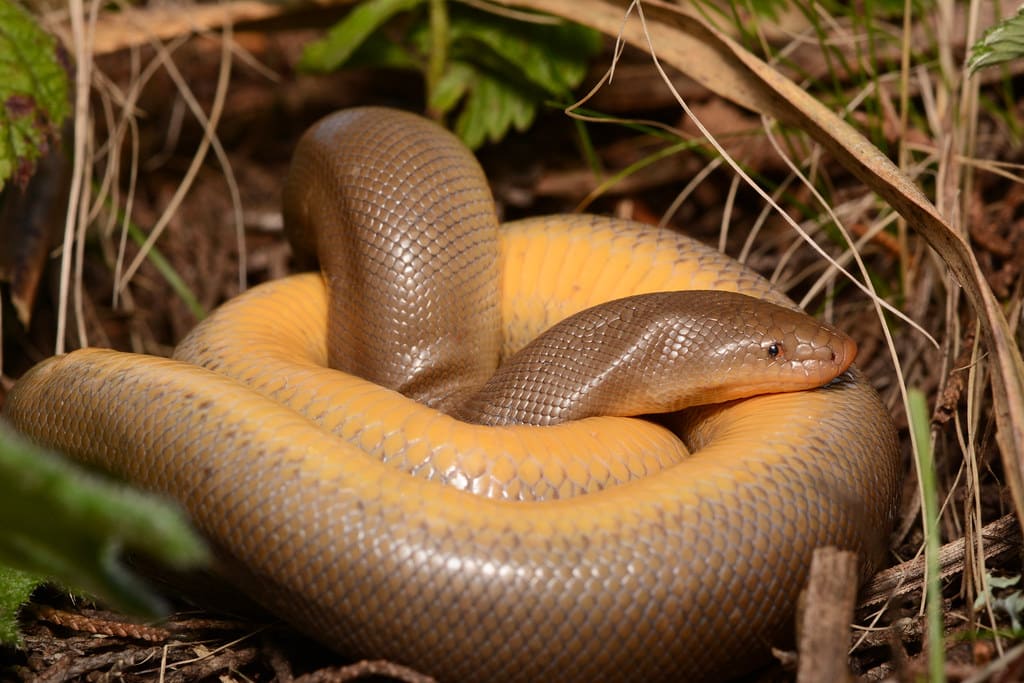
Image Source: Andrew DuBois
2. Western Territorial Garter Snake
The western terrestrial garter snake scientifically known as Thamnophis elegans is a popular western North American species of colubrid snake. It can grow in length between 46 to 104 sm and its avarice wieght is 150 gms. As of now, 5 subspecies of western terrestrial garter snakes are known to humans. The avarage lifespan of a western terrestrial garter snake is between 2 to 12 years in the wild. The dietary habits are carnivores in nature and they feed on slugs, salamanders, small mammals, and lizards, however, they are also feeding on a semi-aquatic diet containing frog and toad larvae, leeches, and fish.
Also Read: 21 Cutest Snakes In The World

Image Source: Wikimedia
3. Night Snake
Night Snakes are also one of the popular snakes in Utah scientifically known as Hypsiglena torquata and are mostly seen in the hot areas of the western United States and British Columbia, Canada. The saliva of night snakes is mild venomous which helps them to capture small prey such as reptiles and amphibians. They are also seen eating lizards, lizard eggs, small snakes, frogs, and toads. Their appearance is very similar to rattlesnakes, however, they are harmless to humans. The group of eight snakes is known as pit, nest, or bed and it is most active at night. The avarice lifespan of night snakes is upto 12 years.
Also Read: 10 Snakes That Eat Frogs
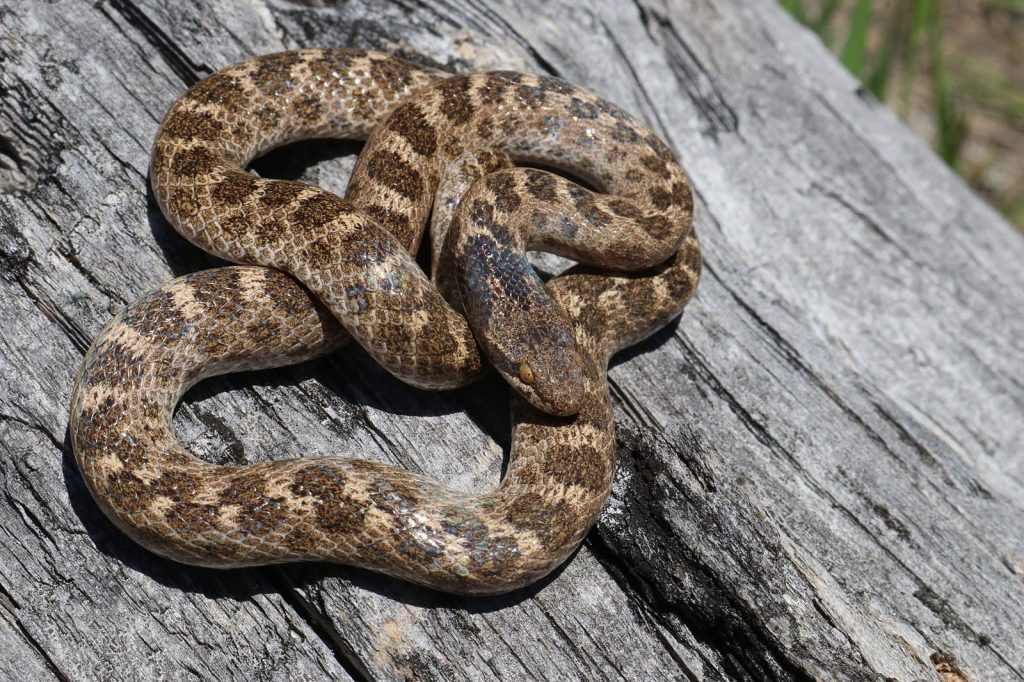
Image Source: Wikimedia
4. Gopher Snake
Gopher Snake scientifically known as Pituophis catenifer and can reach upto 9 feet long in length. It mostly preys on small mammals such as pocket gophers, birds, bird eggs, lizards, insects, and sometimes bats. The avarage lifespan of a gopher snake is upto 15 years in the wild, and 33 years in captivity. As of now, 6 subspecies of gopher snakes are known to humans and mostly seen in the regions of the western United States, southern Canada, and northern Mexico. The snake is named after one of the main parts of its diet – the pocket gopher.
Also Read: 10 Types of Purple Snakes In The World
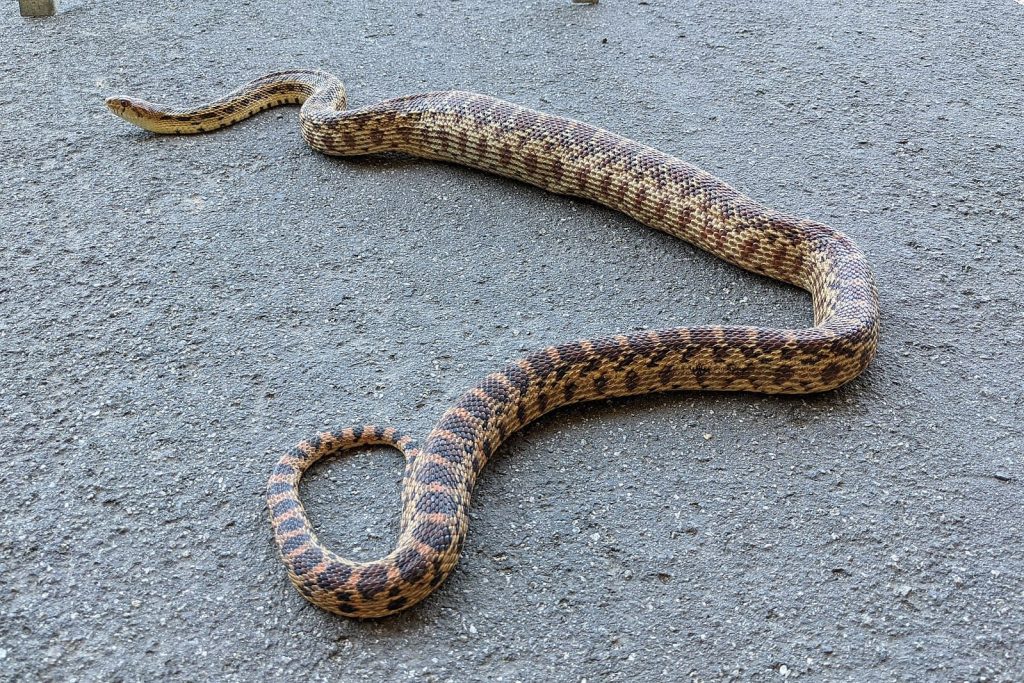
Image Source: Wikimedia
5. Sonoran Lyre Snake
Sonoran Lyre Snake is scientifically known as Trimorphodon biscuits and belongs to the family Colubridae (colubrid snakes). The snake species were mostly seen in the regions of southeastern Nevada, and southwestern Utah along with western Mexico to Costa Rica. Sonoran Lyre Snake loves to thrive in lower rocky canyons and arroyos of hills. Taking about its appearance, it is a relatively long and thin snake and also comes with noticeably large eyes. The adult species can reach upto 3 inches in length, however, most of them will be smaller.
Also Read: 10 Types Of Blue Snakes In The World

Image source: Brian Eagar Nature Photography
6. Milk Snake
The milk Snake scientifically known as Lampropeltis triangulum is a species of kingsnake that belongs to the family Colubridae. The snake species can grow 60 to 132 cm in length and the average wieght is between 38 to 225 gms. Talking about their appearance, they have smooth and shiny scales across the body along with alternating bands of red-black-yellow or white-black-red. The dietary habits of mil snakes are carnivorous in nature and mostly feed on slugs, insects, crickets, and earthworms. They are also known to eat birds and their eggs, frogs, fish, and other snakes. The garage lifespan of Milksnake is between 12 to 21 years in the wild.
Also Read: 16 Most Deadliest Snakes In The World
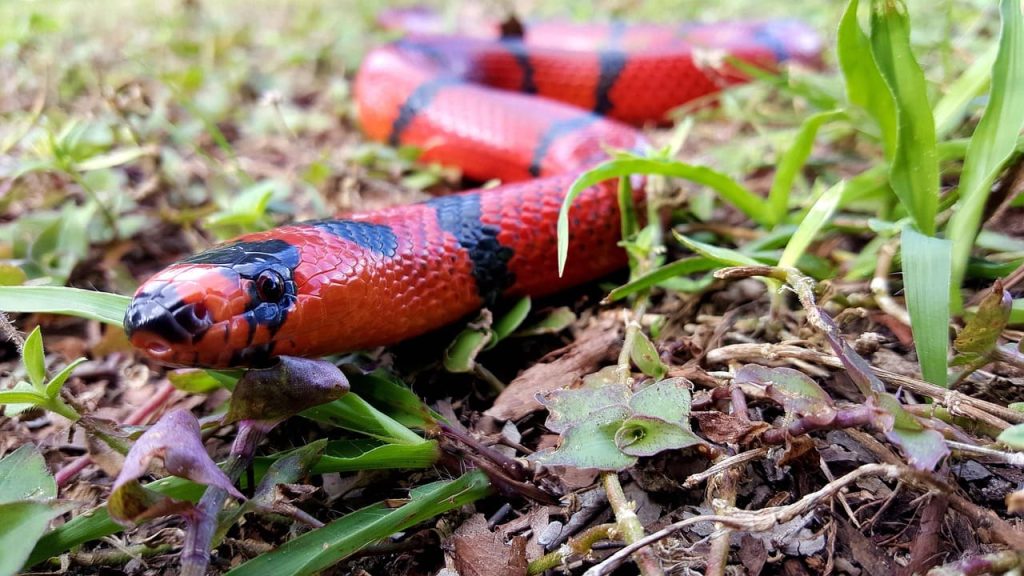
7. Great Basin Rattlesnake
The Great Basin rattlesnake scientifically known as Crotalus lutosus is a pit viper species mostly seen in the regions of the Great Basin region of the United States. The adult species can grow between 66 to 121 cm where males are larger than females. The snake species loves to drive in the regions of the Great Basin region such as hills, summits, rocky hillsides, open deserts, valley floors, and grassy plains. The primary diet includes small mammals such as ground squirrels, mice, rats, and rabbits. Also birds, lizards, snakes, frogs, and insects. The avarage lifespan of a Great Basin Rattlesnake is upto 17 years in the wild.
Also Read: 10 Types Of Snakes With Horns

Image Source: lacomj
8. Sidewinder Snake
Sidewinder Snake scientifically known as Crotalus cerastes and being to the Viper family. It is mostly seen in the regions of the southwestern United States and northwestern Mexico. The snake species can grow between 43 to 76 cm in length and the average weight is between 94 to 304 gms. It is also known as a horned rattlesnake because it has raised scales above its eyes that resemble horns. As of now, three snake subspecies of sidewinder are known to humans such as Mojave Desert sidewinder, Sonoran Desert sidewinder, and Colorado Desert sidewinder. The avarage lifespan of a Sidewinder Snake is upto 20 years or more.

Image Source: Wikimedia
9. Midget Faded Rattlesnake
Midget Faded Rattlesnake comes in both sizes small and big, however, their size will be less than 25 inches. The body is light-colored with limited patterning. The coloration of the body helps it to blend very well with its rocky environment which helps it to defend itself from predators and camouflage for hunting. The snake species primarily feeds on cold-blooded prey such as lizards.
Also Read: Top 10 Black Snakes With Yellow Stripes In The World
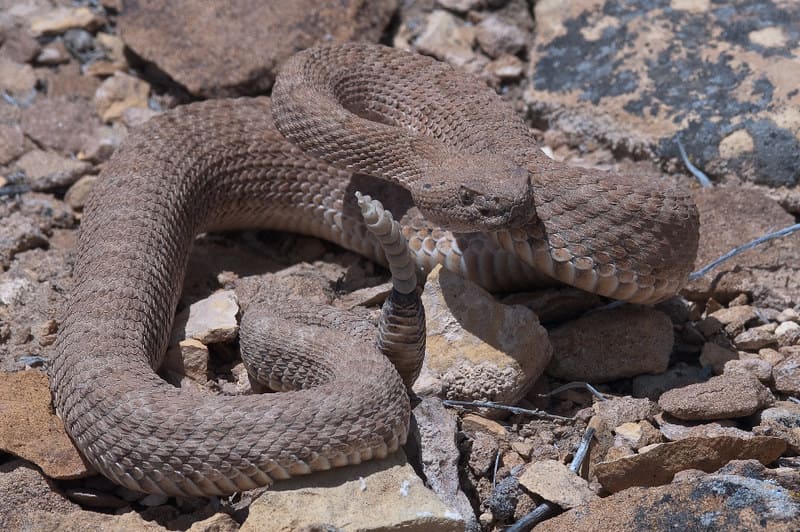
Image Source: Charles (Chuck) Peterson
10. Mojave Green Rattlesnake
Mojave Green Rattlesnake also known as Mojave green, the Mohave rattlesnake is one of the most venomous snakes in Utah. The snake species is scientifically known as Crotalus scutulatus and can grow between 2 to 4 feet in length and is widely distributed across arid habitats. It is most active during the night and during the cooler hours of twilight. The snake species loves to thrive in the regions of high deserts and lower mountain slopes. The Mojave Rattlesnake does not lay eggs instead gives birth to several 9 to 11-inch young. It primarily feeds on Kangaroo rats and other rodents.
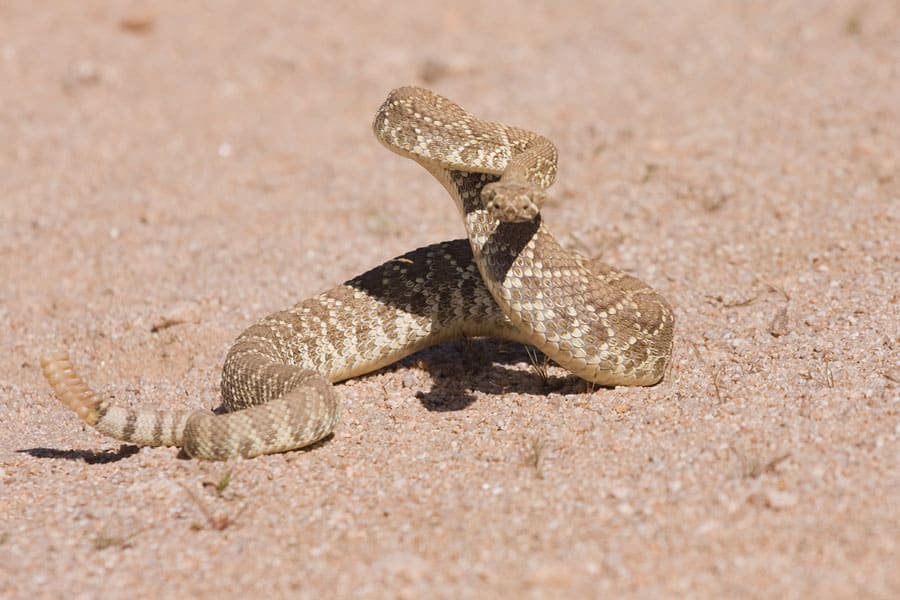
Image Source: Wikimedia
11. Great Prairie Rattlesnake
The Prairie rattlesnake scientific name is Crotalus viridis is a pit viper species native to North America. The body length is between 100 tp 151 cm in length and avarage wieght is between 227 to 361 grams. It is one of the common snakes in Utah known for its lightly colored in hues of brown. There are patches of dark brown are often distributed in a dorsal pattern. Even color band can be seen at the back of the eye. The avarage lifespan of great prairie rattlesnake is between 16 to 24 years in the wild.

Image Source: Tatiana
12. Speckled Rattlesnake
Speckled Rattlesnakes is also known as Mitchell’s rattlesnakes found in the southern half of the Baja California Peninsula in Mexico and a few nearby islands. They have a neurotoxin in their venom called crotoxin which is similar to the South American rattlesnakes. The name of the snake comes from its pattern of speckles over a lighter base color, however, there are many species approaching crossbands that become more defined as saddle markings toward the tail. The avarage lifespan of speckled rattlesnake is between 10 to 15 years in the wild.
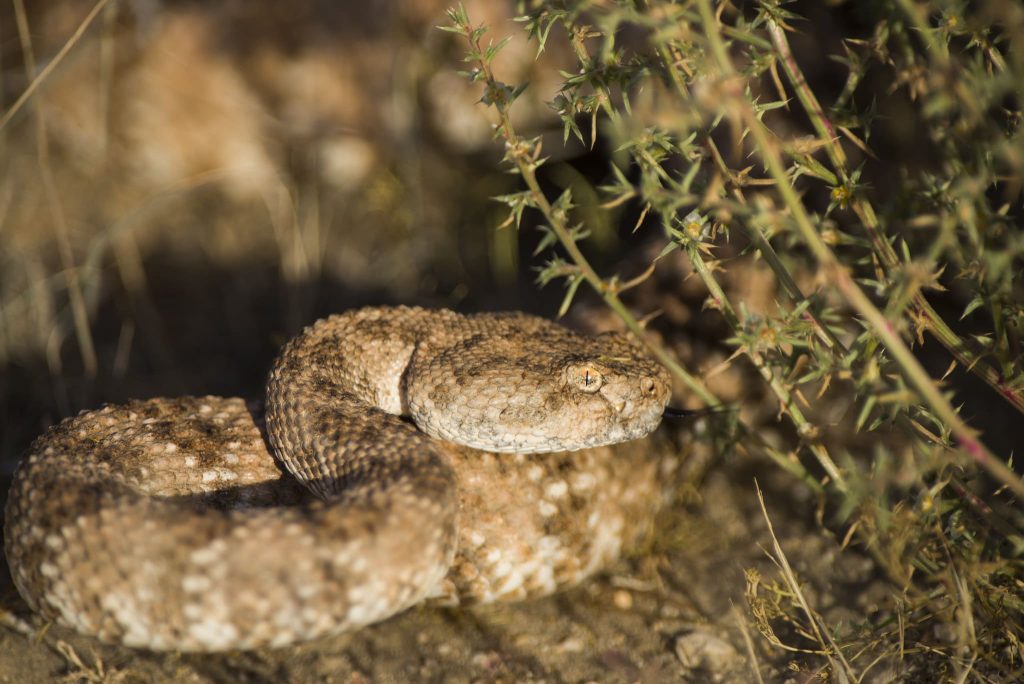
Image Source: Joshua
13. Sonora Mountain Kingsnake
The Sonora Mountain Kingsnake is a medium sized snake species that comes with ed, white, and black bands on its body. They also have a flat and wide head. The scientific name of snake species is Lampropeltis pyromelana and peers region with rocky, montane, and often near streams or springs. The snake species is limited to to the east-central mountains in Nevada. The avarage lifespan of Sonora Mountain Kingsnake is between 10 to 15 years in the wild.
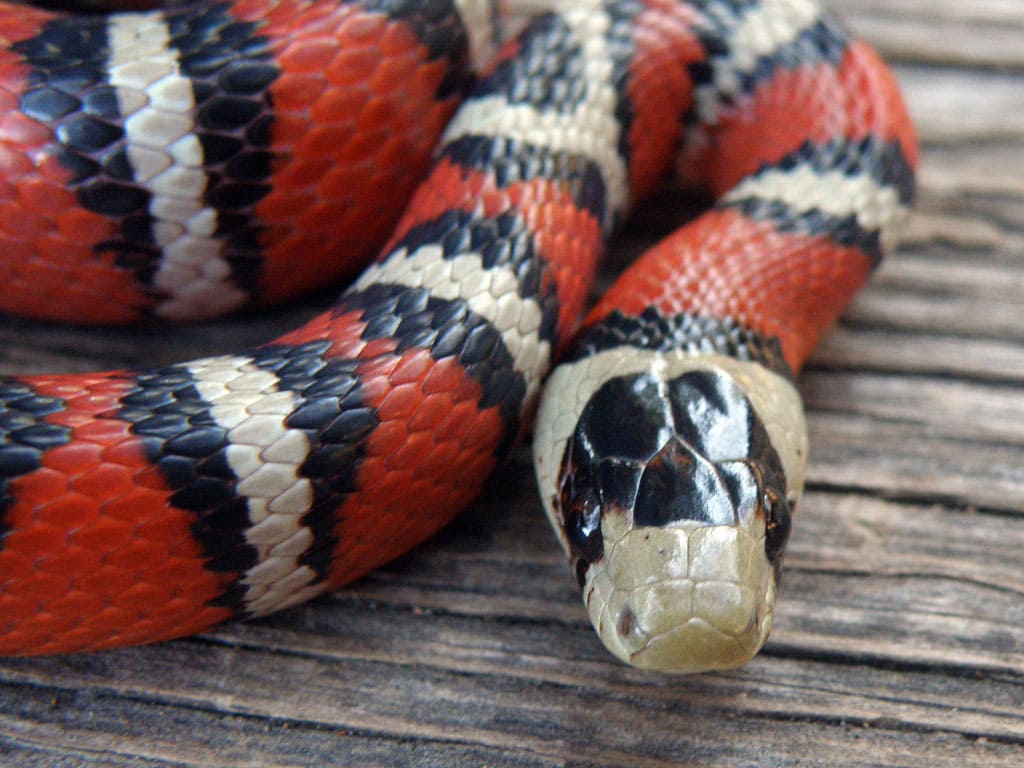
Image Source: David
14. Striped Whipsnake
Striped Whipsnake scientific name is Coluber taeniatus known for its long, smooth, slender snakes that can reach between 36 to 72 inches in length. Talking about the appearance, the upper side of the body is black or brown with lateral white stripes along its length, however, their underside is white or cream colored. They are mostly seen in the specific parts of western United States and northern Mexico and hence one of the common snakes in Utah. The primary diet of striped whipsnake consist of lizards. It is also known as black and white snakes in the world.

15. Desert Night Snake
The night snake scientific name is Hypsiglena torquata is a snake species that belongs to the family colubrid. They are seen in the regions of British Columbia, Canada through the western United States to Mexico. Talking about the appearance, they have a pale gray, light brown, or beige in color, with dark grey or brown blotches on the back and sides. The snake species is slightly venomous which is not harmful to humasn and uses this venom to subdue its prey. The primary diet includes lizards and their eggs.
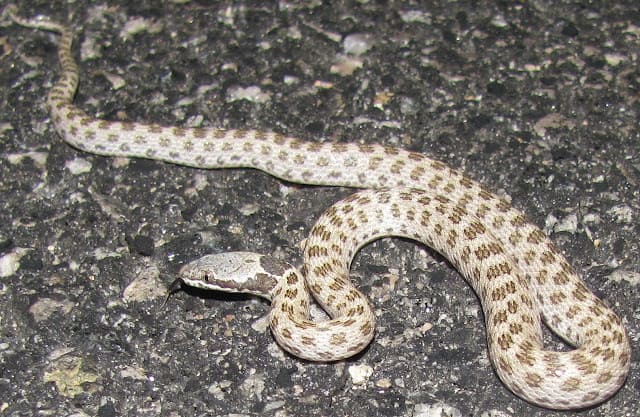
Image Source: Jonathan
16. Crotalus concolor
Crotalus concolor is one of the common snakes in Utah found in the western United States. They are known for its faded color pattern. The other names of the snakle species are midget faded rattlesnake, faded rattlesnake and yellow rattlesnake. The snakes species can grow upto 75 cm (29+1⁄2 in), however, the smallest gravid female measured was 52.2 cm (20+1⁄2 in). There are various color patterns of the same species such as pinkish, pale brown, yellow-brown, straw-colored, reddish, or yellow-brown ground color, overlaid with a series of brown elliptical or rectangular dorsal blotches.
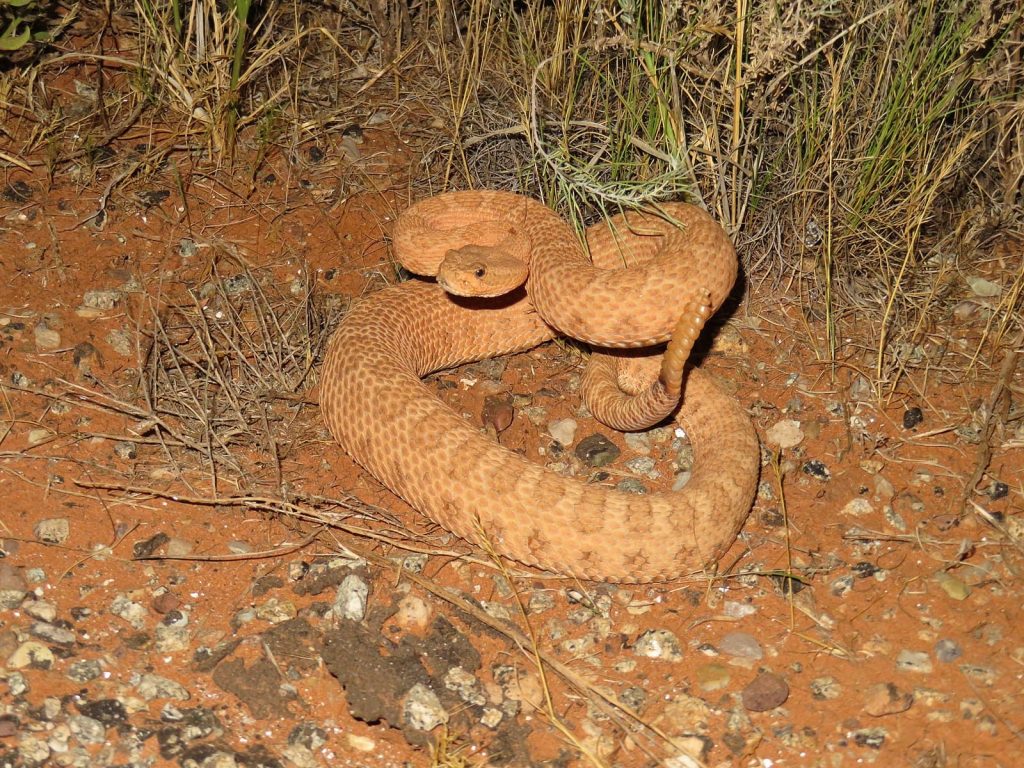
Image Source: Wikimedia
This is the list of 16 different types of snakes in Utah. kindly share and do post your comments.

